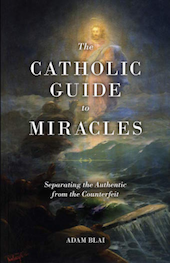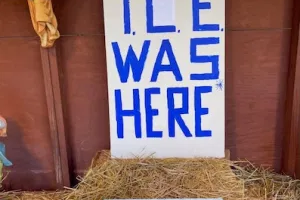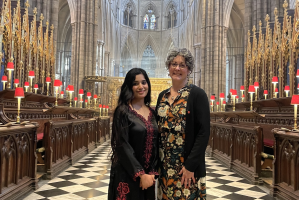Book: Catholic Guide to Miracles

Something nobody can explain: The Catholic Guide to Miracles - Separating the Authentic from the Counterfeit - by Adam Blai. Manchester New Hampshire. Sophia Institute Press 2021.
Fifteen minutes walk from my home in England is a gallery in stained glass of healings at the tomb of Saint Thomas Becket, Archbishop of Canterbury, murdered in his cathedral. Many miracle stories can still be traced there, almost 500 years since the martyr's shrine was destroyed under Henry VIII.
In 2020 a shrine was reinstated in Saint Thomas's Catholic church, a hundred yards away, but I have not yet heard of any miracles there. On the other hand, there have been occasions when each of my children came close enough to accidental death for me to be immediately and eternally grateful to God for their preservation. Divine intervention? It felt like it!
So what is a miracle? Adam Blai starts with Thomas Aquinas's definition: 'a true miracle is something that has a cause that is absolutely hidden from everyone, and that nobody, no matter how knowledgeable, can explain'. (p 2) Creation was the first miracle, the Universe made out of nothing.
Adam Blai takes us through Old Testament Miracles: for example, the healing miracles brought about through the prayer of Elisha and Elijah before him, each restoring to life the son of a woman benefactor. Strangely though, Blai does not acknowledge that many of the Plagues of Egypt have plausibly been ascribed to natural causes.
It is the New Testament that tells of the greatest miracle:
And if Christ has not been raised, then empty [too] is our preaching; empty, too, your faith. (1 Cor. 15:14)
In the years before the cross and resurrection, Christ performed many miracles, miracles that Blai tells us 'were proofs beyond His words of who He was' (p13). Those who see the Church's preaching as empty will explain them away, and many of the healings at Thomas's shrine could now be attributed to natural causes. The Church is well aware of this, which is why so few - 60 or 70 - healings at Lourdes in 260 years have been verified as miraculous, a minute proportion of the pilgrims who visit in hope of healing. Blai, like the Church herself, is not naive in the face of healing miracles, but he points out that they are the miracles most open to investigation and so are resorted to in the process of canonisation of saints.
There are, of course, other miracles - he cites the appearances of Mary through the ages, and the healings and other phenomena that people other than the visionaries themselves have witnessed. There are also apparently supernatural events recorded around certain saints: stigmata, levitation, bodily incorruption, and miracles deriving from the Eucharistic elements. Although many such stories were reverently told in my Catholic school, a more mature faith leaves them open to question. Adam Blai accepts God's interventions but he would not build his faith on these accounts.
In fact Blai is at pains to point out that there are counterfeit miracles. Discerning the difference between supernatural miracles, counterfeits brought about by demons, and mental illness is an important part of his work for the Church (p129); for example, once correctly diagnosed the mentally ill person may be led to accept appropriate help. Yet there are those whose delusions are deep-rooted but also have the charisma to attract others to what becomes a dangerous cult.
Counterfeit, charismatic faith healers are another dangerous group who use people's fascination - or gullibility - around miracles to line their own pockets, dividing families in the process.
A greater concern for Blai in his work, if not for the average believer who may live a lifetime without coming across such people, is demonic possession and fake miracles. A devil cannot produce a real miracle, but can set up counterfeits, and during exorcism may cry out in protest at being evicted.
I knew someone who was using a ouija board which went silent when, unknown to her, the local priest called on her parents; another young woman was greatly distressed to be told that her boyfriend was soon to die horribly in a road accident. The spirit that may be conjured up in such seances cannot be relied on to be truthful, as I told her; the accident did not happen, but the distress was real and hurtful. The reader will find a full exposé of the ouija board in this volume.
If miracles and the supernatural interest you, this book will give substance to your enquiries. It's important not to get carried away by miracles that add nothing to the revelation of God's love for all women and men in Christ Jesus. See them as a new expression of his love, for one person or for many, often for a limited time, like the miracles at Becket's tomb in Canterbury.
I was glad to read this wise paragraph from Adam Blai's conclusion (p164).
Real miracles are proofs of God, but we cannot build a faith based only on them. We need a living relationship with God through His Church. The main vehicles of grace are the Word of God and the sacraments, instituted by Christ. The centre and goal of Christian faith is a living relationship with Jesus, the Father, and the Holy Spirit.


















